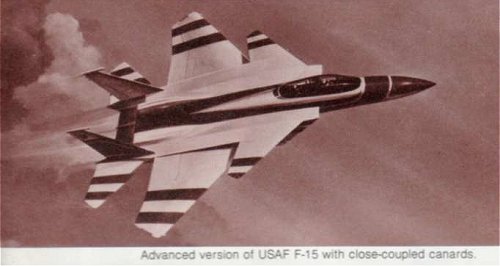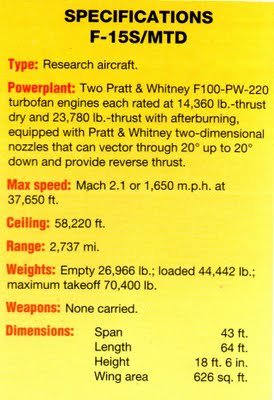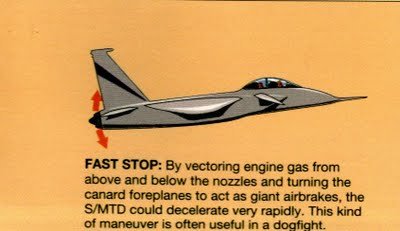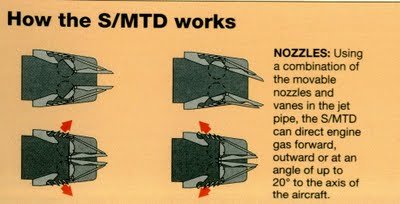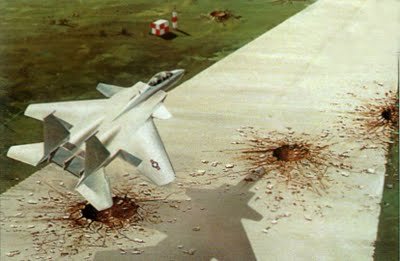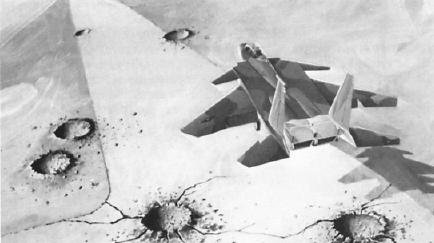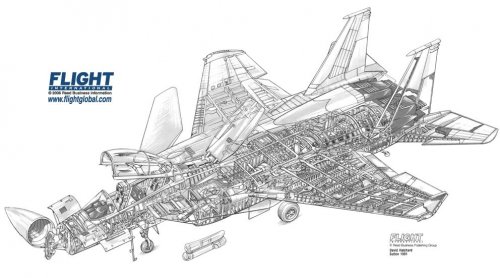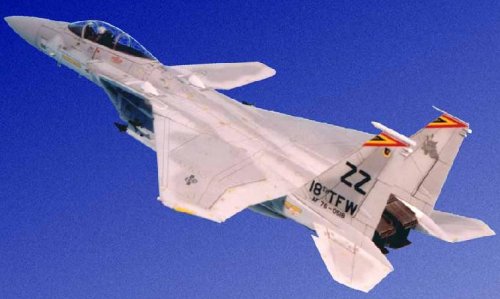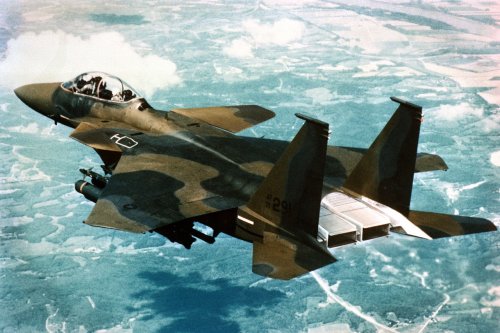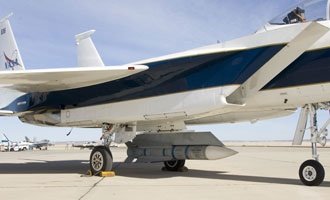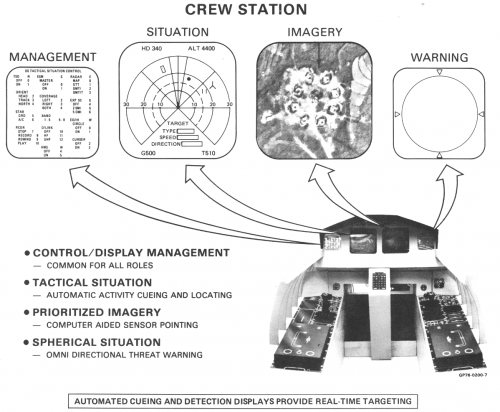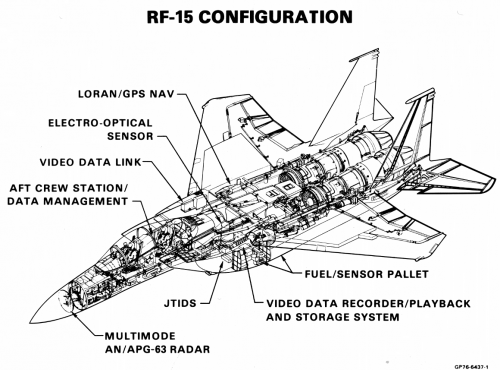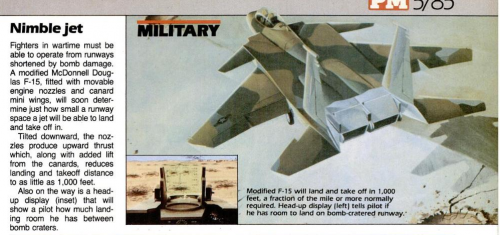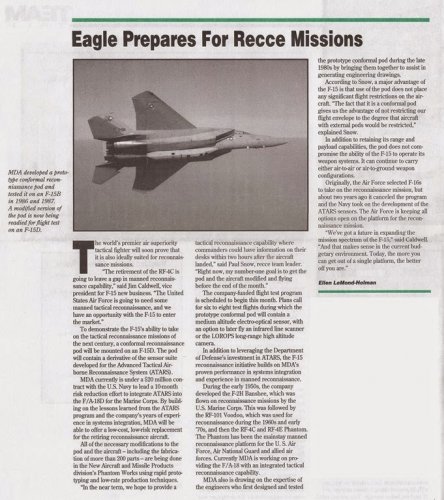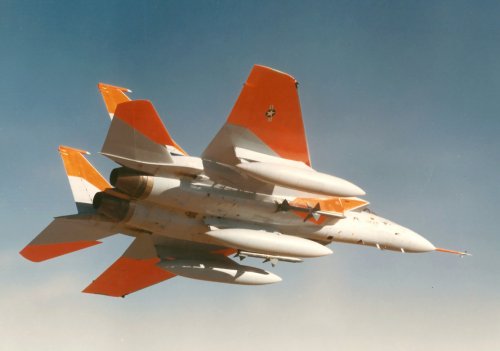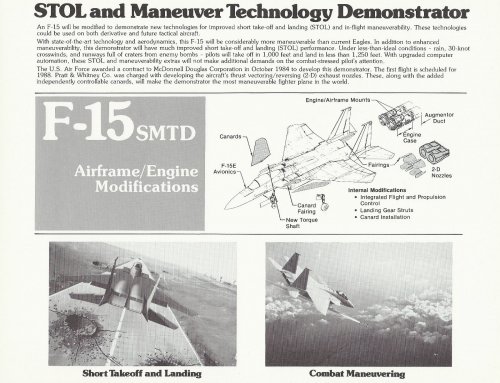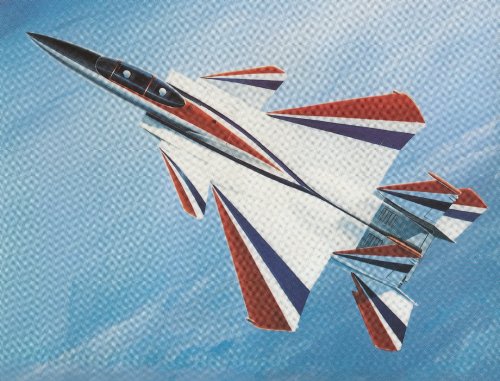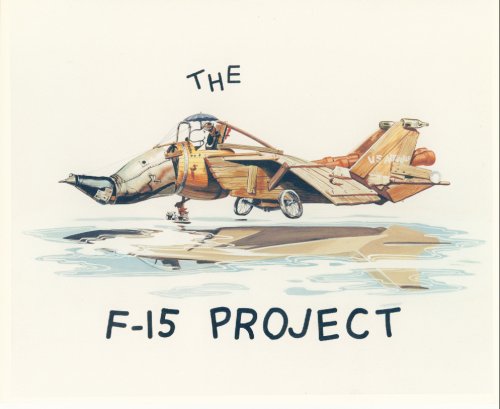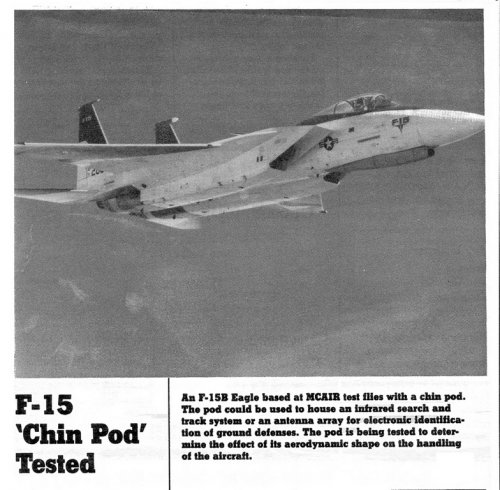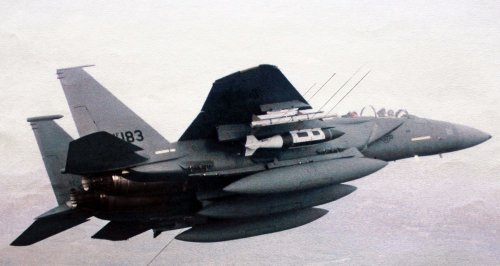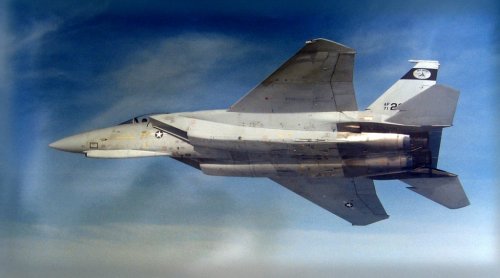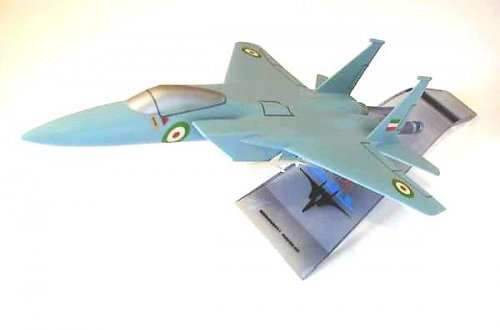MCDONNELL DOUGLAS is emphasising the ability to do air-to-surface missions as well as advanced tactical reconnaissance in its RF-15 Eagle proposals to the United States Air Force. The company points to the growth available in the basic F-15 and two-seat TF-15, but also makes it clear that most of the new systems planned for the Eagle are not only compatible with the present fit but can be installed in space already available in the airframe.Some 77 cu ft of F-15 internal volume is available either for more fuel or equipment, according to McDonnell. The electrical generators can provide another 50kVA of power
and the central computer has nearly 14,000 unused 32-bit words of capacity.
McDonnell proposes that the RF-15 could be introduced into USAF service in 1983, gradually absorbing technology from the current RF-4C Phantom. The F-15's conformal Fast Packs, which have already undergone flight-testing in their fuel-carrying form, would be used. It is intended that financing will build up relatively smoothly as the various configurations of packs and sensors are developed in sequence.
The modifications needed to produce an all-weather, real-time reconnaissance Eagle are claimed to be at a "minimum." New modes will be added to the Hughes APG-63 radar by using advanced techniques such as Doppler beam-sharpening and synthetic-aperture radar. Moving-target indication (MTI) and terrain-following/avoidance modes would also be added, clearly to assist in low-level penetration missions.
The current radar is said to have the processing elements and frequency characteristics demanded by these new modes, while retaining all the current air-to-air modes. Integrated with and cued by the radar would be a combined forward looking infra-red (FLIR) and electrooptical sensor for identifying small targets originally acquired, for example, on radar. The aft cockpit (twocrew are regarded as essential for missions such as reconnaissance and SAM suppression) would be substantially modified to allow the second crewman to manage the systems with the aid of multiple cathode-ray-tube displays, side-mounted hand controllers, a computer, recorders and a data link.
McDonnell Douglas' determination to develop an all-weather strike/attack version of the Eagle, so far completely ruled out by the USAF (see Flight for July 24, page 219), emerges in the company's list of USAF systems which are compatible with the planned RF-15. They include:
• Pave Spike — the Westinghouse ASQ-153 pod is day-only but has television for target detection and identification as well as a laser designator for ground attack.
• Pave Tack — Aeronutronic Ford is prime contractor for this day/night gyro-stabilised pod, which has a forward-looking infra-red sensor for detection and identification, plus a laser designator. The FLIR is
currently the subject of competing proposals by Texas Instruments and Honeywell.
• IR Linescan—the Honeywell AAD-5 infra-red linescanner proposed is the same as the state-of-the-art system being installed in Iranian RF-4Es and chosen for retrofit in some US RF-4Cs.
• Terec—the USAF ALQ-125 Tactical Electronic Reconnaissance (Terec) sensor, made by Litton Amecom, is about to enter service in the RF-4C. The system is designed to locate and identify electronic threats in the battle area. Terec II is designed to add this capability to the QSR system (see below).
• Latar—improved daytime television performance is offered in the Latar (Laser Augmented Target Acquisition and Recognition) pod. The sensor has a narrow-field zoom lens and an automatic video tracker. Near-hemispherical coverage forwards and downwards suggests air-to-ground applications. Latar is being developed by Northrop (see Flight for June 5, page 1492) from the highly successful Tiseo pod, with the addition of a laser designator and spot tracker.
• Loran—Loran C/D would provide high-accuracy navigation for the RF-15. The AN/ARN-92 is already fitted to F-4Ds and A-7Ds, and new equipment is included in the Lear Siegler AN/ARN-101 digital system being installed in F-4Es and RF-4Cs.
• JTIDS—the Joint Tactical Information Distribution System is a digital communications link for real-time distribution to both air and ground units. It uses time-division, multiple access techniques, and a terminal for small platforms such as tactical aircraft is in advanced development. Of the 12 terminals under contract, seven are for the US Navy and five are destined for use in four F-15s; one of the latter batch will be a spare. McDonnell Douglas is expecting a further JTIDS study contract.
• QSR—the Quick-Strike Reconnaissance (QSR) programme is aimed at developing real-time techniques and is to be flight-tested in an RF-4C during 1977. Radar with MTI will be used to cue the FLIR identification sensor in the Pave Tack pod, with data management being integratedvia a modified Lear Siegler ARN-101.
• UPD-X—a projected long-range, all weather sideways-looking airborne radar (SLAR) capable of supplying information via data links to a ground station for analysis in near-real time. Digital processing is used throughout and some of the hardware is already available for testing.
• GPS—the Global Positioning System (GPS) is a proposed worldwide satellite navigation system. Prototype equipment is being designed and built at present. Periodic satellite coverage is expected by 1978, and a fully developed production system should enter service in 1983.

